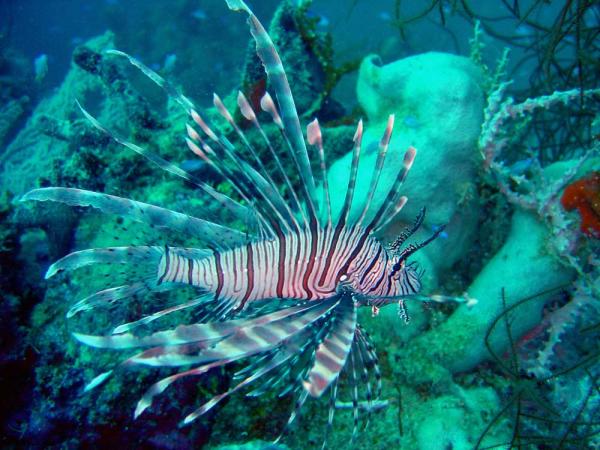
Ocean Invaders: Exotic Species Spreading Through World's Seas

Exotic species have invaded more than 80 percent of the oceans and coasts on Earth, causing problems that can ultimately cost billions of dollars to handle and these species may spread even further as climate changes worldwide, scientists find.
Invasive species are infamous for wreaking havoc on land kudzu vines have covered large swaths of the U.S. Southeast; zebra mussels have invaded U.S. waterways; and rabbits and cane toads have bred to huge numbers in Australia.
Now scientists find that 84 percent of all marine regions harbor invasive species as well, said marine ecologist Susan Williams, director of the University of California's Bodega Marine Laboratory. More than half of these are harmful against the invaded territories, she added.
"There are more than 500 non-native species established in U.S. tidal waters," Williams said last weekend at the American Association for Advancement of Science conference in Washington where she presented her findings.
Worryingly, even remote Antarctica is afflicted .
"Antarctica is important to us not just because of penguins and melting ice, but because it is a very special place for organisms 50 percent of the species there live in Antarctica and no place else, so it's a very special place for biodiversity," Williams told OurAmazingPlanet.
How invaders invade
Sign up for the Live Science daily newsletter now
Get the world’s most fascinating discoveries delivered straight to your inbox.
When it comes to how these invasions happen, 50 percent of cases are carried in by ships and boats in ballast and on hulls and 25 percent have aquaculture farming to blame. The rest of the time, a variety of culprits are at work, including the aquarium trade, the live seafood industry and marine debris, Williams said.
Ships carry water as ballast to help stabilize them when they are not hauling cargo. "It's estimated that about 10,000 species are in transport in ballast water every day," Williams said.
Meanwhile, twice as many species of exotic creatures hitchhike aboard hulls. They cost the shipping industry a whopping $36 billion by increasing the amount of drag they face in the water and thus significantly adding to how much fuel they have to use.
Aquaculture, and particularly shellfish farming, is often seen as a way of providing cheap, healthy seafood in a sustainable manner. However, shellfish farming has inadvertently caused a high number of invasive species to spread, with cultured oysters going feral in 18 countries around the world, including the United States, Williams said.
The aquarium trade has also introduced devastating intruders around the world, including beautiful â?? but venomous â?? lionfish . "These are voracious predators it's amazing how fast they can prey on other fish," Williams said. "They've spread from the Caribbean up and down the East Coast [of the United States]."
A common aquarium seaweed, Caulerpa, has also invaded California, Australia and the Mediterranean.
Evidence is also building that marine debris, such as that making up the infamous giant patch of garbage in the Pacific, are potential vehicles for invasive species. "We know that non-native species have been found on plastic in areas they do not belong," Williams said.
Possible remedies
In terms of what might be done to curb the spread of invasive species in the oceans, Williams noted public awareness was key.
"The invasions of a lot of species that are really problematic, such as lionfish or Caulerpa, could have been avoided if people just knew not to dump aquariums into natural waters," she said. "Consumer choices at the supermarket are important too, such as people eating species that are cultured and native to the area where they are buying them."
The shipping industry is pushing for federal regulations for the wise management of ballast water, Williams said, to replace the patchwork quilt of state regulations they face as they go up and down coasts "that's a nightmare for them." Boat owners can also make sure that when they maintain hulls, they do so out of the water, so as not to release invasive species back into the sea.
"It will also be really good for policymakers to have more research into the economic costs of marine invasive species," Williams said. "These species are manageable. We know how they're getting in and we know how to stop them, and it's to our economic advantage to do so."
- Alien Invaders: Destructive Invasive Species
- Image Gallery: Creatures from the Census of Marine Life
- Invasive Plants Sometimes Offer Help Instead of Harm










